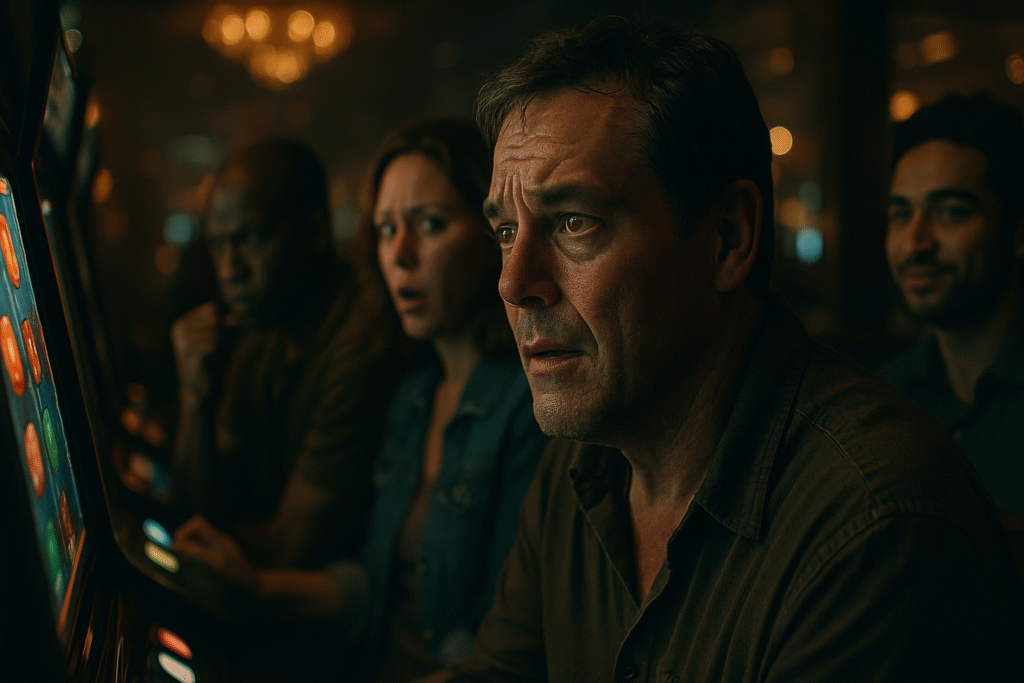In a world flooded with content, the right 15-second video clip can capture attention, spark engagement, and even change minds. But what makes a short-form slot clip truly perfect? Let’s break down the art and science behind creating memorable, effective videos that connect in the time it takes to tie your shoes.
Why 15 Seconds? The Power of Short-Form Video
Attention spans have shrunk. Studies suggest people lose focus after about eight seconds. Platforms like TikTok, Instagram Reels, and YouTube Shorts have capitalized on this reality, giving creators just 15 seconds to make an impact. With so little time, every moment counts. These clips perform well because they deliver messages fast, meet audiences where they are, and fit neatly into busy lives. However, making a short video that lands isn’t easy. Each second must serve a purpose.
Understanding the Audience
Before planning or filming anything, ask: Who am I talking to? When you know your target viewer, you can shape your video to resonate. A clip aimed at teenagers will differ sharply from one meant for working parents. Audience research, even informal checks of trending videos in your niche, can reveal what your viewers enjoy. Look at questions people ask and notice which videos spark conversation. Tailoring your content to meet audience needs gives it the best chance of success.
Platform Differences Matter
Instagram users might expect polished visuals and quick how-tos, while TikTok fans love quirkier, less filtered stories. YouTube Shorts often work best for hacks, humor, or teasers. If your slot clip appears in an app’s slot machine feature or is designed as an ad, consider what users expect in that space. Pick a tone, editing style, and subject that matches the platform’s culture. This alignment helps viewers stick around instead of swiping to the next post.
Start Strong: The Hook
The first three seconds are critical. Viewers decide fast whether to keep watching. Effective hooks grab attention with a bold question, surprising action, or eye-catching image. For example, if your clip starts mid-action (“Wait until you see what happens…”) or with a dramatic statement (“You’re loading your laundry all wrong!”), people want to see what comes next. These openings perform best when they skip pleasantries and get to the point.
- Pose a relatable problem (“Ever wonder why your plants keep dying?”)
- Show a curious object or moment right at the start
- Use text or captions to preview the punchline
Keep It Simple: One Message per Clip
A common mistake in short videos is trying to do too much. Simplicity wins. Pick one message, scene, or tip to showcase. If you teach viewers how to cut a mango, don’t add extra kitchen hacks. Stick to your single idea and deliver it cleanly. This focus makes your video easier to understand, remember, and share. If you find yourself adding layers or tangents, trim them. The strongest slot clips often answer one question or show one action.
Clarity Beats Complexity
Edit every second for clarity. Make sure visuals, captions, and music support your core message. Remove anything that confuses or distracts from the point. A clear message travels farther and helps your brand or idea stick.
Show, Don’t Tell
Actions make a bigger impact than explanations. Instead of listing reasons why a hack works, demonstrate it. If you’re promoting a new face cream, show clear before-and-after results or use split-screen reactions. Sound and motion draw attention—use them. Quick visuals of transformations or demonstrations often outperform talking heads or static slides.
- Use close-up shots that highlight details
- Lean on movement—pour, twist, splash, reveal
- Mix sound effects with music for added impact
Movement and Pacing: Keep the Energy Up
Slot clips live and die on pacing. A 15-second video should never drag. Rapid cuts, kinetic movement, and tight edits all help keep interest high. However, don’t go so fast that the viewer gets lost. Instead, layer shots so each serves a purpose, revealing new details or building on the last.
Editing Tips for Better Flow
- Trim silences and pauses
- Add jump cuts or zooms to highlight key moments
- Match the rhythm of music to your edits
- Use quick reaction shots to add humor or surprise
Well-paced clips keep viewers watching to the end and push them to take action.
Emotional Triggers: Make Viewers Feel Something
People remember what moves them. Even a short video can spark joy, laughter, curiosity, or even surprise. Humor works well, especially in product demonstrations or micro-sketches. Satisfaction also travels fast, like when viewers see a process completed (think cleaning or cooking clips). Cute animals, kids, or clever editing can make viewers smile and share.
Consider what emotion you want to draw out. Shape your concept and editing choices with this goal in mind. If your clip aims to shock, open with a twist. If you want to inspire, add uplifting music or surprising success stories. Emotional pull increases the chances your clip gets shared and remembered.
Branding Without Overdoing It
Branded slot clips must balance promotion with viewer value. Avoid lengthy logos or heavy-handed calls to action. Instead, insert small, memorable branding touches. For example, use on-screen text, a brand color palette, or a recurring jingle. Product demos work best when they solve a problem rather than push a hard sell. If you place your product naturally in a context your audience relates to, it feels authentic.
Subtle Cues for Stronger Recall
- Logo briefly in the corner
- Brand sound at the end
- Quick reference in dialogue or captions
This keeps your clip memorable but not annoying. When branding feels helpful instead of intrusive, your message sticks.
Get Creative: Stand Out With Format & Content
With millions of slot clips online, creative risks are rewarded. Think of unexpected formats: try reverse sequences, stop-motion, or fast-paced split-screens. Visual surprises, such as hiding the reveal until the end, can keep viewers invested. Experiment with transitions, humor, or point-of-view shots to add freshness. However, always make sure creativity serves your core idea. Gimmicks fade; a strong message backed by creativity lasts.
Examples of Creative Short-Form Content
- Visual “magic tricks,” like cutting between scenes for dramatic changes
- Speed drawing or time-lapse makeovers
- Mini-challenges (“Can you do this in 5 seconds?”)
- Unexpected voiceovers or sound swaps
Accessibility: Make Every Second Inclusive
Not all viewers can or will listen to audio. Text captions improve enjoyment and widen your reach. Add readable captions on-screen, especially for spoken instructions or important details. Use high-contrast visuals and avoid fast flashes. When possible, use clear, simple language and avoid slang that may alienate some audiences. Making your clips accessible helps your message land with more viewers and shows respect.
Sound: Use Music and SFX for Impact
The right soundtrack changes mood in an instant. Most slot clips feature catchy music, clever sound effects, or custom jingles. Choose background music that matches your message: energetic beats for “how-to’s,” calming tones for wellness, or playful tunes for humor. Level sound so voices and effects are clear, not drowned. Sync cuts with music to give the whole video more punch. Unexpected sound swaps, like animal noises over dance moves, can create memorable moments that travel far online.
Tuning Sound to the Platform
Consider platform norms. TikTok allows trending songs and encourages user-made audios. Instagram Reels often favor commercial music or creator libraries. On YouTube Shorts, original sound and voiceovers do well. Pay attention to what’s trending: being first on a track can make a difference.
Storytelling in a Blink
Even in 15 seconds, a story arc works wonders. This might include a setup (problem or question), a middle (action or experiment), and a payoff (solution, punchline, or reveal). This three-part structure feels satisfying, even without words. A simple visual story, like someone struggling to open a jar then finding a quick fix, can spark “aha” moments. Narrative structure keeps people engaged and gives your clip a sense of completion.
Call to Action: Invite the Next Step
You might want viewers to comment, share, or visit a site. In 15 seconds, the softest calls to action work best. Pose a question (“Have you tried this trick?”) or hint at more (“See part 2 for the full reveal!”). Use captions or on-screen text rather than long spoken directions. If your CTA is fun, interactive, or rewarding, it’s more likely to work. Slot clips that spark curiosity often get viewers to engage further.
Testing, Iterating, and Learning
No matter how strong your first attempt, treat every clip as a learning opportunity. Track views, shares, watch time, and comments. Platforms offer detailed analytics to help you see what drew the most attention. Test different hooks, formats, and message styles to learn what resonates. Listen to feedback—comments are a goldmine for quick fixes. Keep an eye on the competition as well. Sometimes, a slight tweak in pacing or visuals can double your results.
Common Mistakes to Avoid
- Slow starts—don’t spend precious seconds on intros
- Poor lighting or muffled sound
- Complex jargon or slang that confuses viewers
- Overcrowded visuals or too many messages
- Skipping captions, which leaves some viewers out
Tools and Resources for Better Slot Clips
Most great clips start with good preparation. Use a decent smartphone or camera. Free apps like CapCut, InShot, and VN Video Editor simplify editing. Platforms such as Canva help with captions and graphics. For sound, explore libraries inside TikTok, Instagram, or YouTube, as well as sites like Epidemic Sound (always check rights before using). Quick rehearsal before filming often saves editing time later. Plan your shots or storyboard to avoid last-minute stress and keep filming tight.
Case Studies: Memorable Short-Form Examples
The Viral Cleaning Hack
An everyday influencer films a dirty oven, then sets a phone timer: “Watch what happens in 12 seconds.” Fast-motion scrubbing, clever wipes, and a shining reveal deliver satisfaction and drive shares. Captions highlight key products, subtle branding appears on a glove, and a playful jingle plays throughout. The payoff? Millions of views and hundreds of comments requesting more tips.
TikTok Dance Challenge
A group starts dancing in sync, but with a twist—each member uses everyday objects. The opening cut is dynamic, the track is a trending sound, and captions invite viewers to “show your best remix.” The result: mass participation and a 45% engagement rate.
Mini-Makeover Reveal
An artist draws a quick sketch of a viewer’s profile, flipping the page at the 13-second mark to show a transformation. Tight cuts and uplifting tunes keep the pace lively. Text is clear and bold, and the viewer’s reaction is the emotional hook. The straightforward concept and satisfying reveal push viewers to share their own requests.
Best Practices Checklist for 15-Second Slot Clips
- Start with a strong, surprising hook
- Focus on one clear message
- Edit out all filler—keep it lean
- Use movement, visual cues, and quick cuts
- Add captions for clarity and accessibility
- Tune sound to match mood and platform
- Include subtle, helpful branding
- Ask for simple engagement (“Tap if you agree!”)
The Payoff: Longevity From Brevity
Short-form slot clips may only last 15 seconds, but done right, their impact can keep rolling for days or even weeks. Creating the perfect clip means balancing creativity with clarity and respecting your viewer’s time. As you experiment, focus on what serves your message and your audience. Every frame is a chance to connect.



